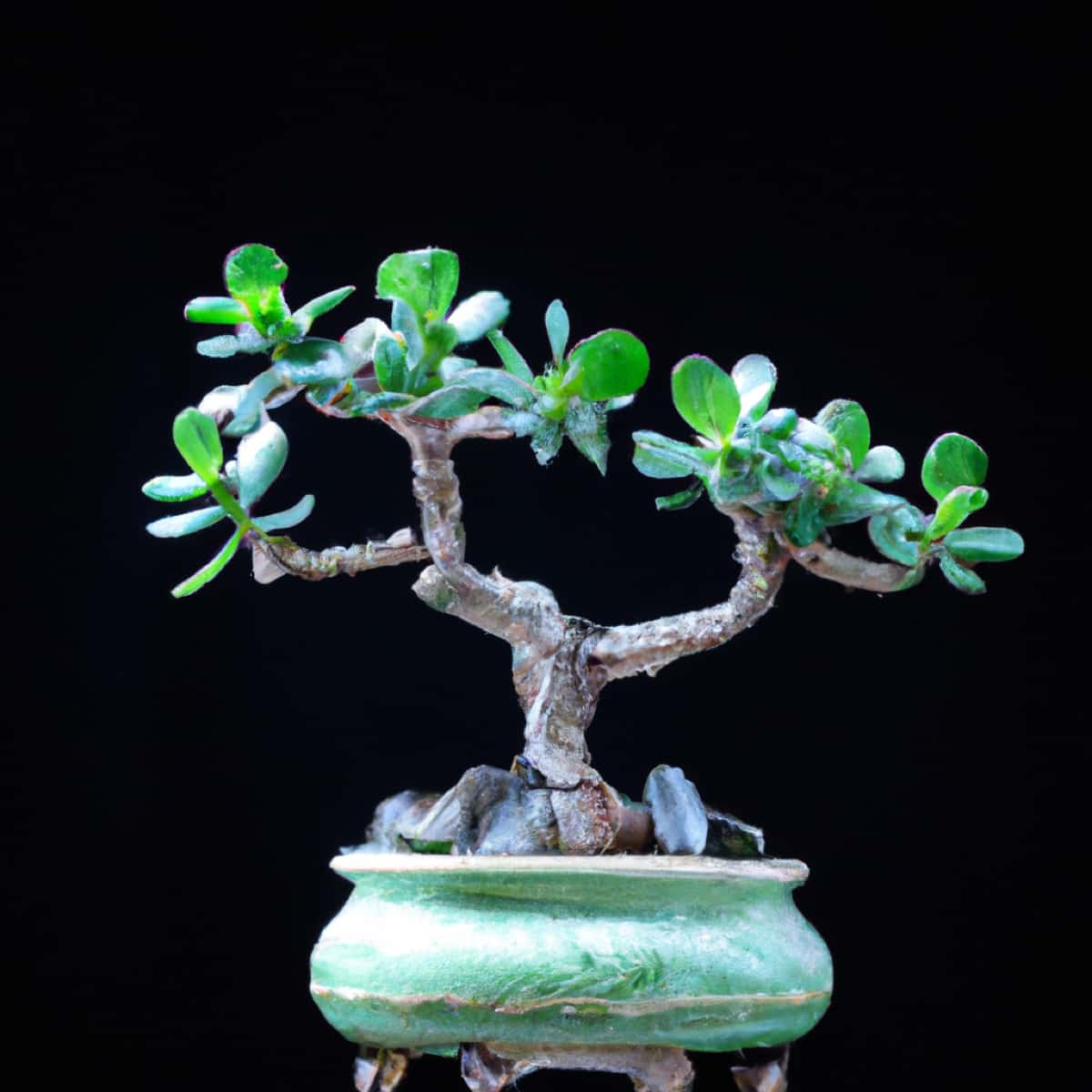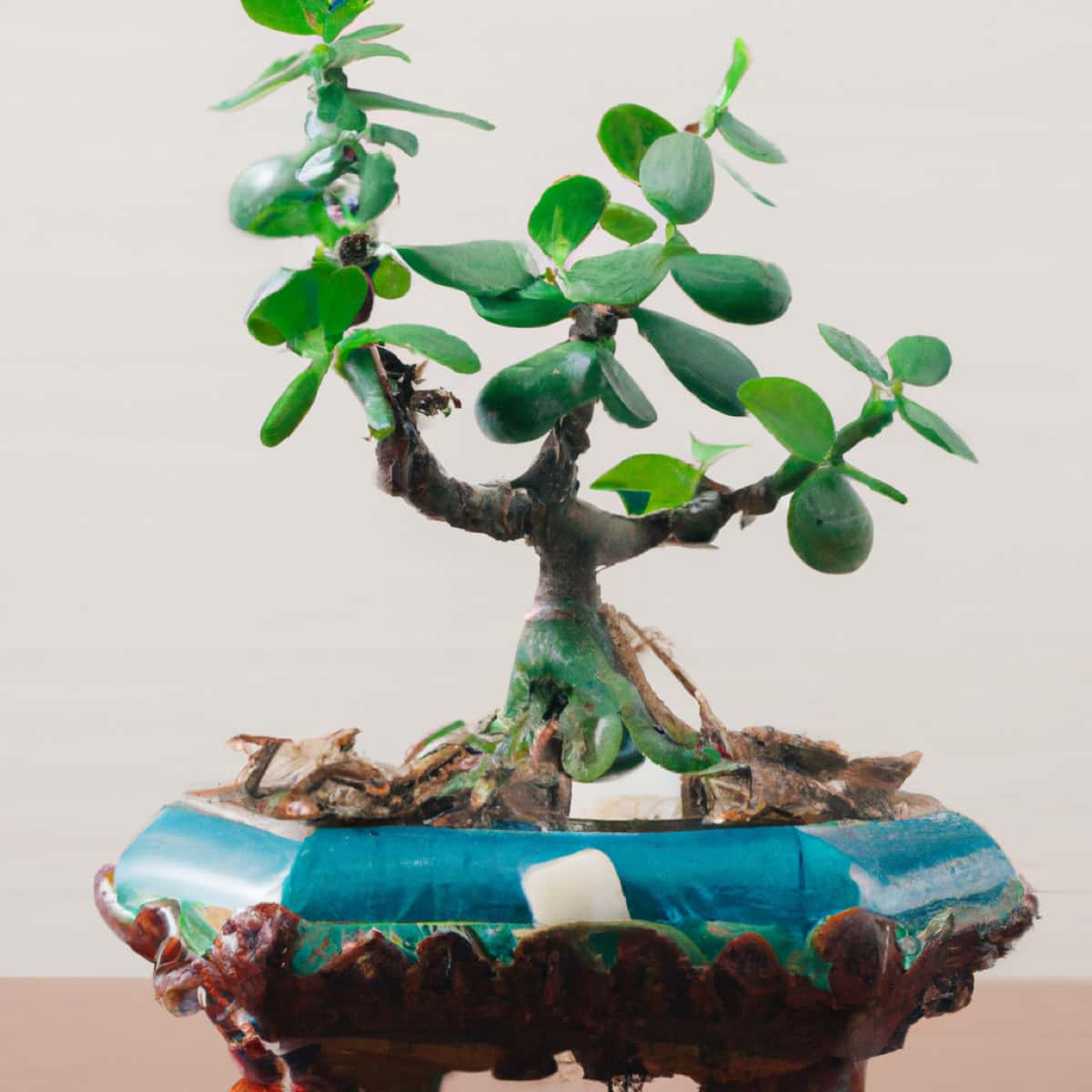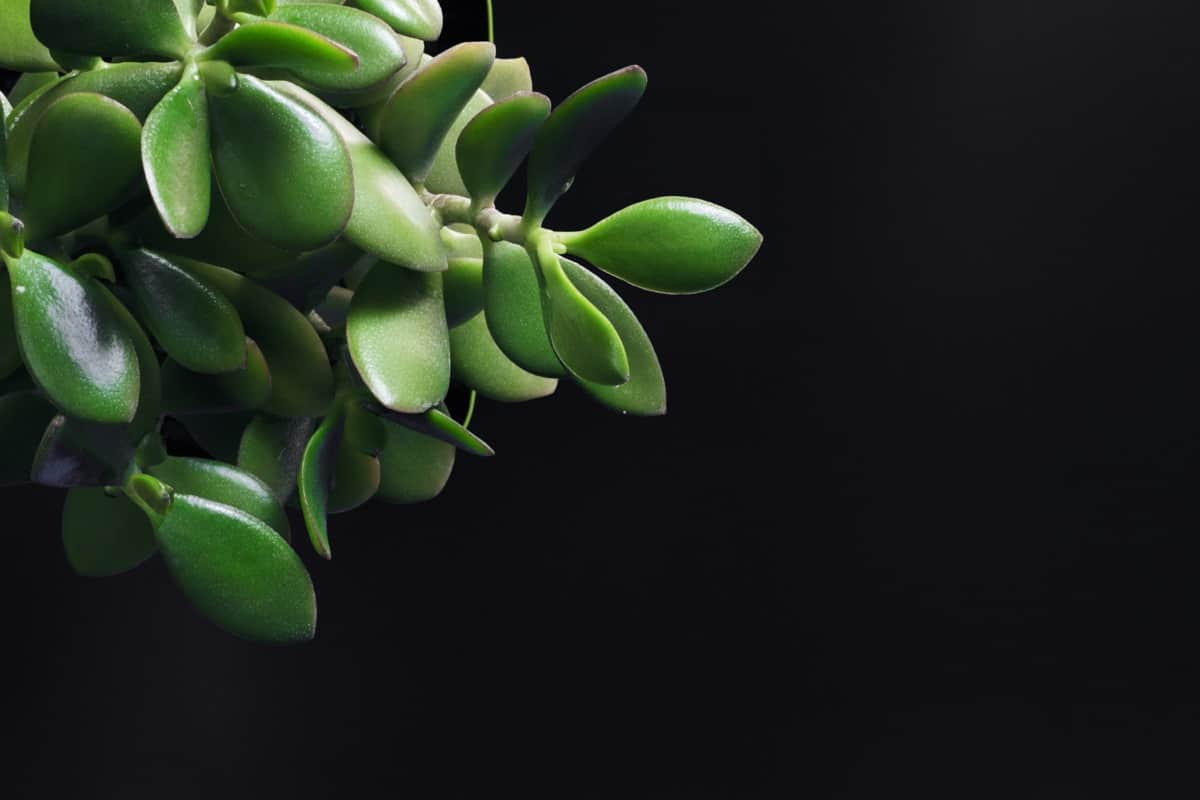The art of bonsai involves careful care of miniature trees, and jade bonsai is no exception. Jade plant bonsai, also known as the lucky plant or money tree, is a succulent with a naturally miniature and bonsai-like form, making it perfect for bonsai cultivation. While mastering how to bonsai a jade plant may seem daunting, the rewards are plentiful as you witness the growth and flourishing of your mini jade bonsai.

The process involves strategic jade bonsai pruning, a regular watering schedule, and paying attention to sunlight exposure, among other practices. Herein is a detailed guide featuring practical and actionable insights on how to grow and care for a jade bonsai.
How to Grow and Care for Jade Bonsai
Step-by-step Guide on Planting Jade Bonsai
Planting jade bonsai commences with the selection of a healthy cutting. The cuttings are often obtained from an adult jade plant called jade plant bonsai from cutting. For a successful jade bonsai planting, carefully cut a small branch from an existing jade plant using a sharp knife, ensuring that it is about 2 to 3 inches long.
Allow the cutting to dry for a few days until a callus forms over the cut surface. Next, plant your jade cutting into a well-draining bonsai soil mix. Keep the soil slightly moist and place the cutting in indirect sunlight until it begins to grow roots. Once rooted, move it to a more sunlit location.
Essential Tips for Growing Jade Bonsai Successfully
Success in growing jade bonsai lies in understanding the plant’s specific requirements. Jade bonsai are sun-loving plants that need ample sunlight exposure for healthy growth. Additionally, these plants are highly adapted to arid conditions, so watering should be done cautiously to avoid overwatering.
Drainage is another crucial factor, as jade plants do not fare well in water-logged conditions. To avoid this, use a soil mix that has good draining properties. Using a shallow bonsai pot to grow your jade bonsai is also recommended, as this ensures proper growth and development of the bonsai tree.
Proper Care Techniques for Jade Bonsai Trees
Bonsai jade plant care is pivotal to maintaining the health and vitality of the plant. Jade plants are succulent, which means they store water in their leaves. As such, overwatering can cause the leaves to become waterlogged and drop. The watering technique involves soaking the soil thoroughly and then allowing it to dry completely before watering again. Jade bonsai care also requires ample sunlight exposure. However, to avoid leaf burn, it’s recommended to gradually introduce the plant to direct sunlight if it has been in a shady area for an extended period.
Best Soil Mix for Jade Bonsai Cultivation
The best soil mix for jade bonsai cultivation is a well-draining one. You can create your mix using equal parts of sand, garden soil, and peat moss. The sand ensures excellent drainage, peat moss provides water retention and nutrient content, and garden soil is for added fertility. This mix will ensure your jade bonsai has an ideal environment for root development and nutrient absorption. It also prevents water-logging, a condition detrimental to jade plants.
Watering Schedule and Techniques for Jade Bonsai
Adopting the correct watering schedule and techniques is paramount for jade bonsai care. Being succulent, jade plants do not require constant watering. Overwatering could cause root rot and attract pests. Let the soil’s top layer dry before watering again. Moreover, when you water, ensure it’s thorough, such that water runs out of the drainage holes at the bottom of the pot. This technique prevents the build-up of salts in the soil, which could harm the plant.
In case you missed it: 12 Common Problems With Indoor Jade Plants: How to Fix, Treatment, and Solutions

Sunlight Requirements for Healthy Jade Bonsai Growth
The jade bonsai thrives in sunlight. Adequate sunlight exposure is crucial for the plant’s growth and development, contributing to its overall health. However, while jade bonsai plants love sunlight, it’s important to note that too much direct sunlight, especially during summer, can scorch the leaves. As such, the plant should be gradually introduced to direct sunlight if it has been in a shady location. Moreover, a spot with morning sun and afternoon shade would be ideal for your jade bonsai.
Pruning and Shaping Techniques for Jade Bonsai Trees
Pruning and shaping are integral parts of jade bonsai care. Jade bonsai pruning helps maintain the tree’s shape and promotes the growth of new branches. To prune your jade bonsai, identify the branches that are out of shape or too large and cut them off at the point where they join the trunk. Shaping, on the other hand, is done through a process called wiring. This involves wrapping a wire around the branches and gently bending them to the desired shape. Remove the wire after the branch has held its shape to prevent it from cutting into the bark.
Fertilization Methods for Promoting Jade Bonsai Health
Fertilization is an integral part of bonsai jade plant care. Even though jade plants are hardy and thrive in poor soil conditions, regular fertilization can help enhance their health and vitality. A balanced liquid fertilizer is ideal for jade bonsai. Use the fertilizer monthly in spring and summer. However, fertilizing should be minimized or stopped during the colder months as the plant’s growth slows.
Preventing and Treating Common Pests and Diseases in Jade Bonsai
Preventing and treating pests and diseases are also critical in jade bonsai care. Common pests that affect jade plants include mealybugs, aphids, and spider mites. Regular inspection can help catch these pests early before they cause significant damage. To handle these pests, try insecticidal soap or neem oil. Diseases that jade bonsai may be prone to include root rot and fungal diseases. To prevent these, ensure your plant is in well-draining soil and avoid overwatering.
Winter Care Tips for Protecting Jade Bonsai During Cold Months
Winter care is crucial to bonsai plant care, as jade bonsai are not frost tolerant. During the winter months, moving your jade bonsai indoors is vital to protect it from freezing temperatures. Moreover, reduce watering during these colder months since the plant goes into a dormancy period. However, ensure the plant receives plenty of light by placing it near a south-facing window or under a grow light. Also, maintain a consistent temperature indoors to prevent shocking the plant with sudden temperature changes.
In case you missed it: How to Grow and Care for Jade Plants: Planting Instructions

Conclusion
Growing and caring for jade bonsai involves patience, skill, and consistent care. The reward, however, is a beautiful and thriving miniature tree that provides aesthetic appeal and a sense of fulfillment and accomplishment. From the initial planting stage to pruning, shaping, and maintaining its health, each step brings a unique and enriching experience. Whether you’re a beginner or a seasoned bonsai enthusiast, the jade bonsai offers an exciting and satisfying journey in bonsai cultivation.
- Feed Your Flock for Less: Top 10 Tips to Save on Chicken Feed
- Ultimate Guide to Ossabaw Island Hog: Breeding, Raising, Diet, and Care
- Hatching Answers: The Top 10 Reasons Your Chickens Aren’t Laying Eggs
- Eggs and Economics: Breaking Down the Cost of Raising Backyard Chickens
- Defend Your Greens: Proven Methods to Keep Iguanas Out of Your Garden
- Ultimate Guide to Cinnamon Queen Chicken: A Comprehensive Guide for Beginners
- Ultimate Guide to California Tan Chicken: Breeding, Raising, Diet, Egg-Production and Care
- Ultimate Guide to Marsh Daisy Chicken: Breeding, Raising, Diet, and Care
- 10 Types of Chicken Farming Businesses You Can Start for Profits